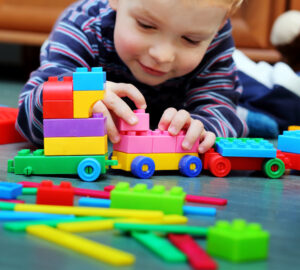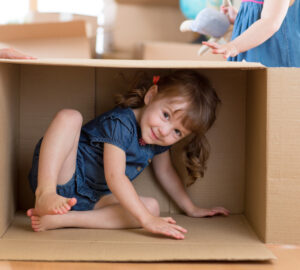 Helmet Safety. Pratically every child rides a wheeled form of transportation – bicycles, skates, roller blades, scooters and skateboards for both fun and practicality. But all of these “toys” have the potential of causing serious head injuries which can result in paralysis, severe amnesia, slurred speech, depression, anxiety and even death. All of these scenarios would be a heartbreak to you and your family. So take the precautions to keep your child safe.
Helmet Safety. Pratically every child rides a wheeled form of transportation – bicycles, skates, roller blades, scooters and skateboards for both fun and practicality. But all of these “toys” have the potential of causing serious head injuries which can result in paralysis, severe amnesia, slurred speech, depression, anxiety and even death. All of these scenarios would be a heartbreak to you and your family. So take the precautions to keep your child safe.
Helmets are the easiest, simplest, and cheapest way to prevent head injuries and can reduce their chances by as much as 88%. Children say that helmets don’t look cool, are uncomfortable or aren’t needed because the child may be older and in more control. However, many children don’t wear helmets simply because their parents don’t make them. And parents can easily change that.
Helmet Tips
Standards
The United States government has created safety standards for helmets and any helmet that meets these safety standards is labeled with a CPSC (Consumer Product Safety Commission) sticker.
The fit of a helmet
The helmet should fit squarely on top of the head and should cover the forehead. If pushed or pulled the helmet shouldn’t cover the eyes or slide to the back of the head. The chin strap needs to be fastened snugly to keep the helmet on correctly.
Lifetime of a helmet
Most helmets have removable fitting pads inside that can be replaced with thinner ones so that a helmet can last a few years as your child’s head grows. If the helmet has been through a serious fall, parents should throw it away and buy a new one. If you aren’t sure whether or not a helmet should be thrown away always err on the safe side and get rid of it.
Getting your child to wear a helmet
Buying the right helmet for your child is one thing, the next challenge is getting them to wear it. If your child is young they are more compliant but as they get older it becomes harder to convince them of the necessity of it.
Early and Often
Begin your child’s helmet use as soon as they begin to play with any wheeled apparatus or are a passenger on the back of a bike. If they begin the habit early enough, they won’t want to ride on anything without one. If your child is older, bring them along to pick out their own helmet and encourage them to personalize it anyway they want with stickers or drawings to make it look “cool”.
The best way to initiate the helmet habit is to wear one yourself. Try to make the whole family go out on bikes and have everyone wear their helmet. The most important reinforcement for children is for them to see other adults wearing helmets. If it’s cool enough for you it’ll be cool enough for your child.
Give your child reasons to wear a helmet
1. All the professional athletes we see in competitions use helmets when participating in their respective sports.
2. Anything with wheels that goes fast isn’t a toy but a vehicle.
3. They can get seriously hurt or die from a head injury.
4. It is a parent’s job to keep them safe.
Reward them for wearing a helmet
If your child wears their helmet without being told, it doesn’t hurt to reward them for responsible behavior. It could be something as simple as praise or more indulgent, whatever fits your way of doing things.
Don’t allow them to ride without a helmet
Always stick to your guns when it comes to safety. They must use a helmet all the time. There’s no point in stressing the safety of using helmets and then allowing your child to occasionally not use one. It makes wearing a helmet not so important.
Encourage their friends
If their friends aren’t wearing a helmet let them know the implications of it and try to encourage them to wear one. If everyone your child is hanging out with wears a helmet it will be easier for them to do the same.
Riding Safety
Although there are many kinds of fun wheeled “toys” that our children ride, bicycles are the most common and pose the greatest risk to kids. Even though our children may be wearing their helmets for protection they should also know the hazards and rules of riding a bike on the road.
Before they get started
Bicycles should be at the correct height for the child who is using it. A rule of thumb is that a child should be able to stand straddling the bike and still have both feet flat on the ground. That means about 1 to 3 inches of space between your child and the top bar.
Parents should make sure the bicycle is in good working order by keeping the chain well oiled, the tires properly inflated, the brakes in safe working order, and the seat, handle bars, pedals and wheels tightly fastened.
Let people see them
Have your children wear bright clothing and put reflectors on their bicycles so that other drivers and riders on the road can see them better. Many accidents occur through no fault of a rider but from someone else’s negligence.
Also, have boundaries on where your child is allowed to ride. It might just be to the end of the street, or only on the sidewalk of the neighborhood. But wherever they ride make them aware of the hazards: cars pulling out of driveways, people walking, baby strollers, crossing the street (it’s best to walk), puddles, leaves, different road surfaces, and curbs.
Here are some other road rules that you may find helpful teaching your child. The more safety information they know the better able they are to navigate through town or the neighborhood.
• Cross the street at intersections rather than between parked cars where it’s harder for drivers to see them.
• When crossing the street (at an intersection) always have them walk their bike and use the traffic signals correctly.
• Always look both ways when crossing an intersection, driveway, or bike lanes. Never assume the way is clear because of a traffic signal.
• Don’t ride against traffic. Always ride on the right hand side of the street in the same direction as other motor vehicles.
• Use bike lanes whenever they can.
• When riding with friends ride single file.
• Don’t ride closely to parked cars because people may get out of them and open their car doors in front of riders.
Information for this article obtained from KidsHealth – www.kidshealth.org and the American Academy of Pediatrics – www.aap.org.



